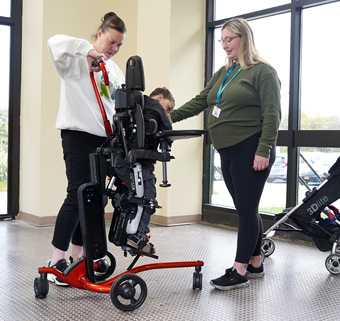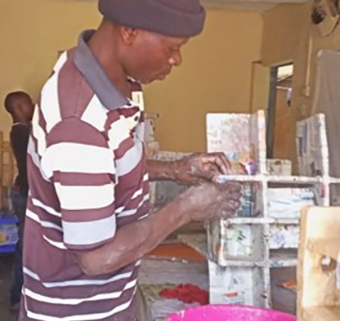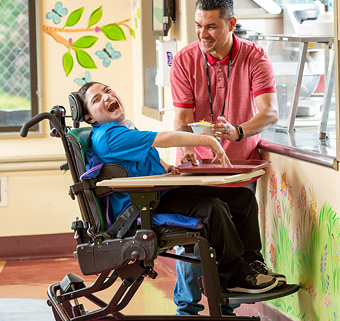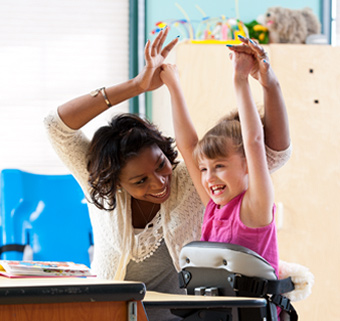Sharing Positioning Instructions in the Busy Developmental Disability Agency: Cerebral Palsy of Westchester, David G. Osterer Center
| October 2014As therapists at Cerebral Palsy Westchester we love to share ideas to improve the work we do. So in this spirit of professional collaboration I’d like to share something we’ve developed at Cerebral Palsy of Westchester that others might find helpful.
Cerebral Palsy Westchester is a non-profit organization that provides a broad range of services to children and adults with cerebral palsy and all other developmental disabilities. Naturally we use adaptive equipment all the time to position participants for education, vocation and recreation. In order to reliably communicate key positioning instructions among various team members, we developed a positioning protocol.
A typical positioning protocol includes:
- the participant’s name
- equipment used or desired positional placement (eg. sidelying)
- a list of positioning supports and prompts (eg. pillows, wedges, forearm prompts)
- a picture of the participant properly supported in the equipment (these are also stored digitally and can be easily sent to a parent or group home)
- amount of time an individual spends in the equipment or position
- comments and extra information
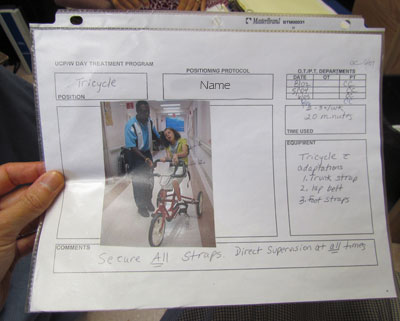
Every classroom has a positioning protocol book with additional information for hygiene care, detailing the best toileting method for each participant, and mealtimes which includes feeding equipment, diet, food allergies and the best position for feeding. We reevaluate protocols at least once a year.
These references help our staff. They can come into a room, pull out the positioning binder and know exactly what to do. It also makes it easy for new staff and substitutes to provide proper positioning even in new situations. Best of all we’ve found it actually improves communication among staff.
Download an interactive Positioning Protocol.
